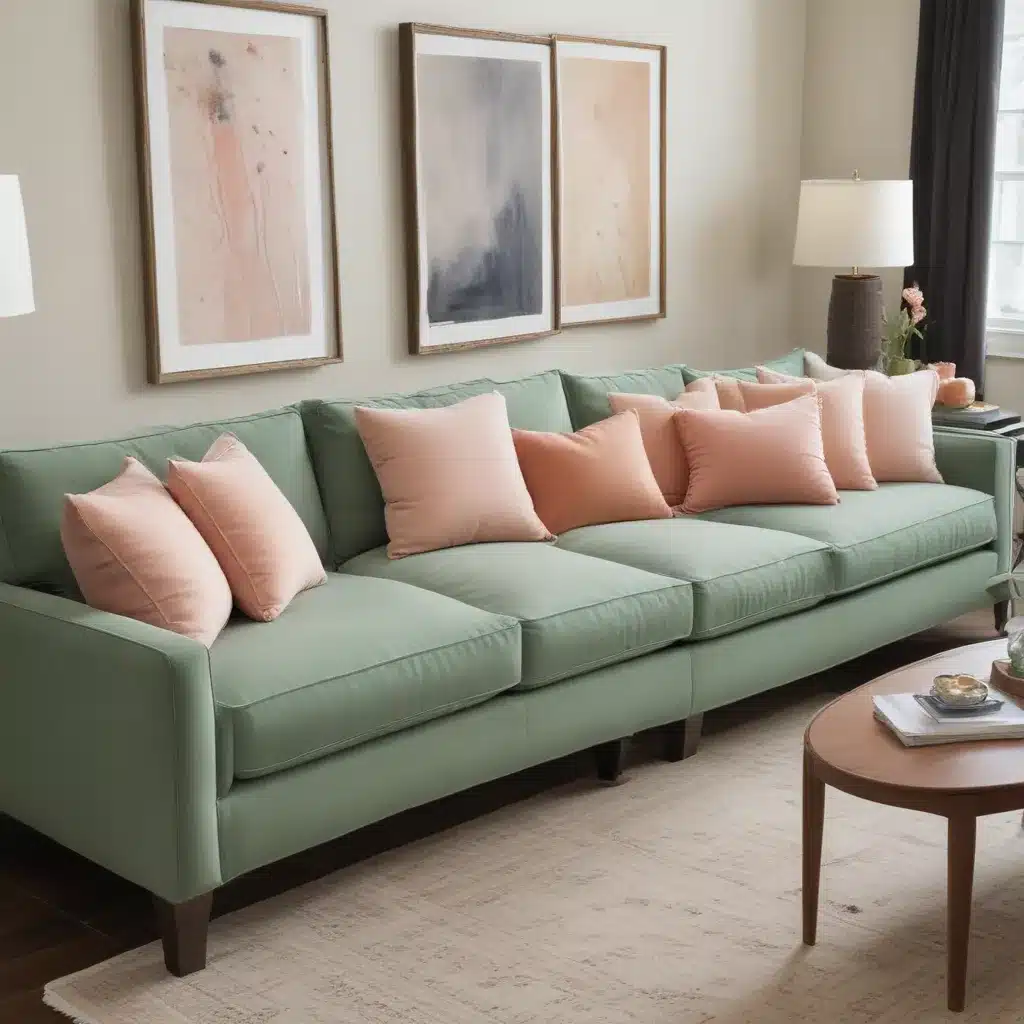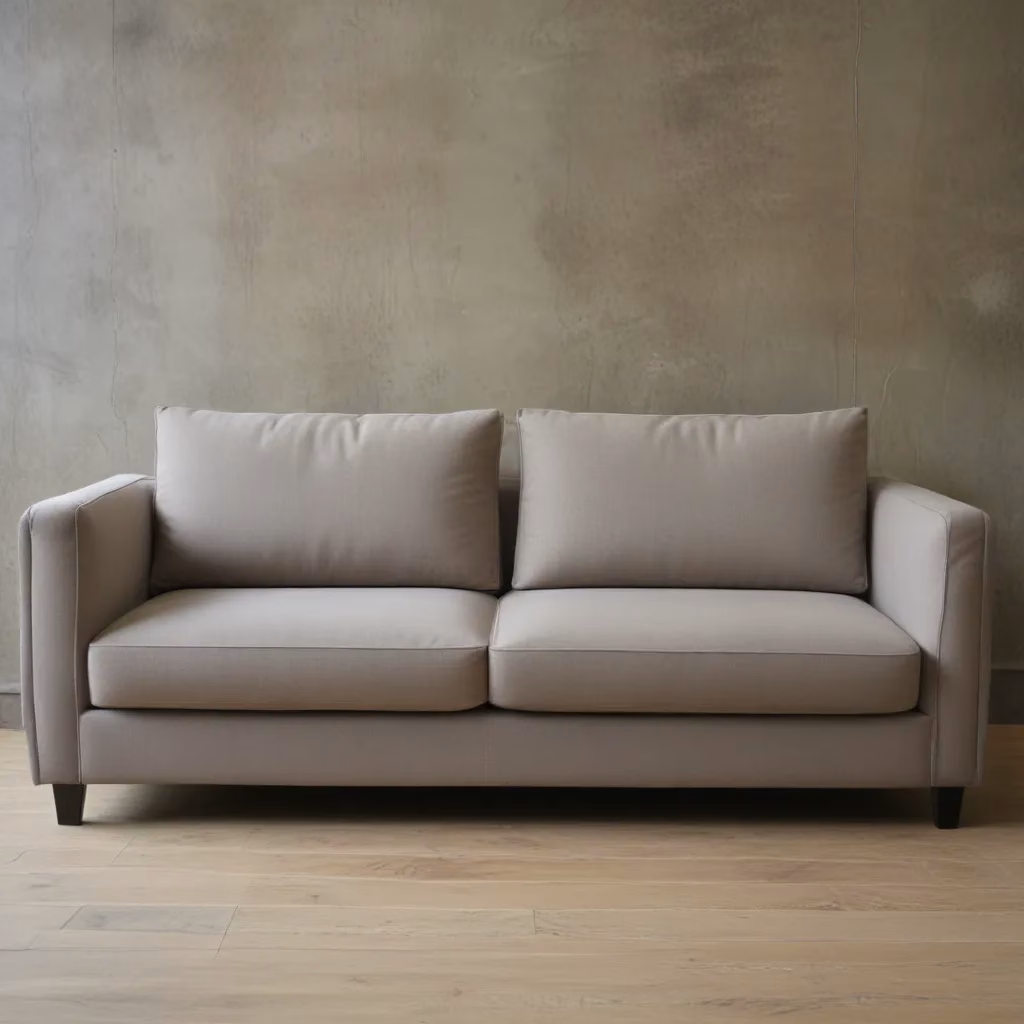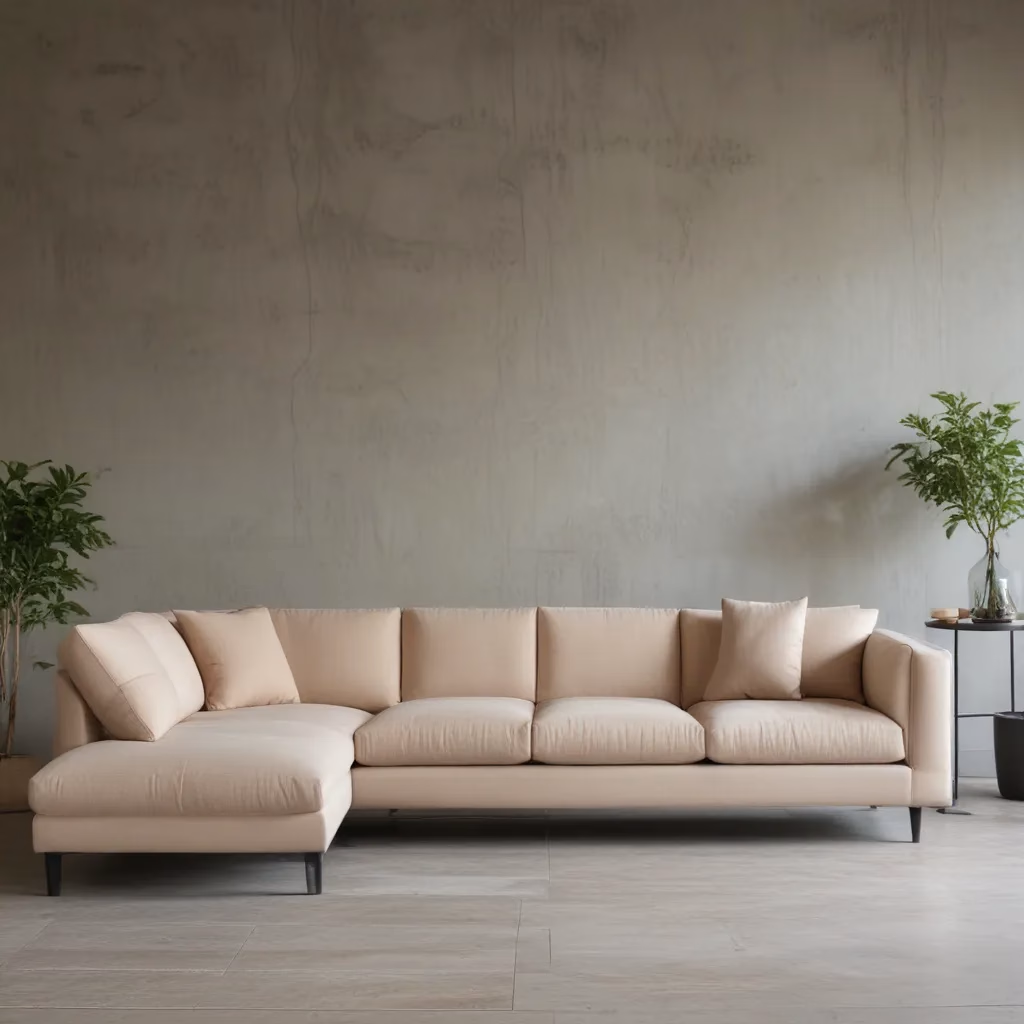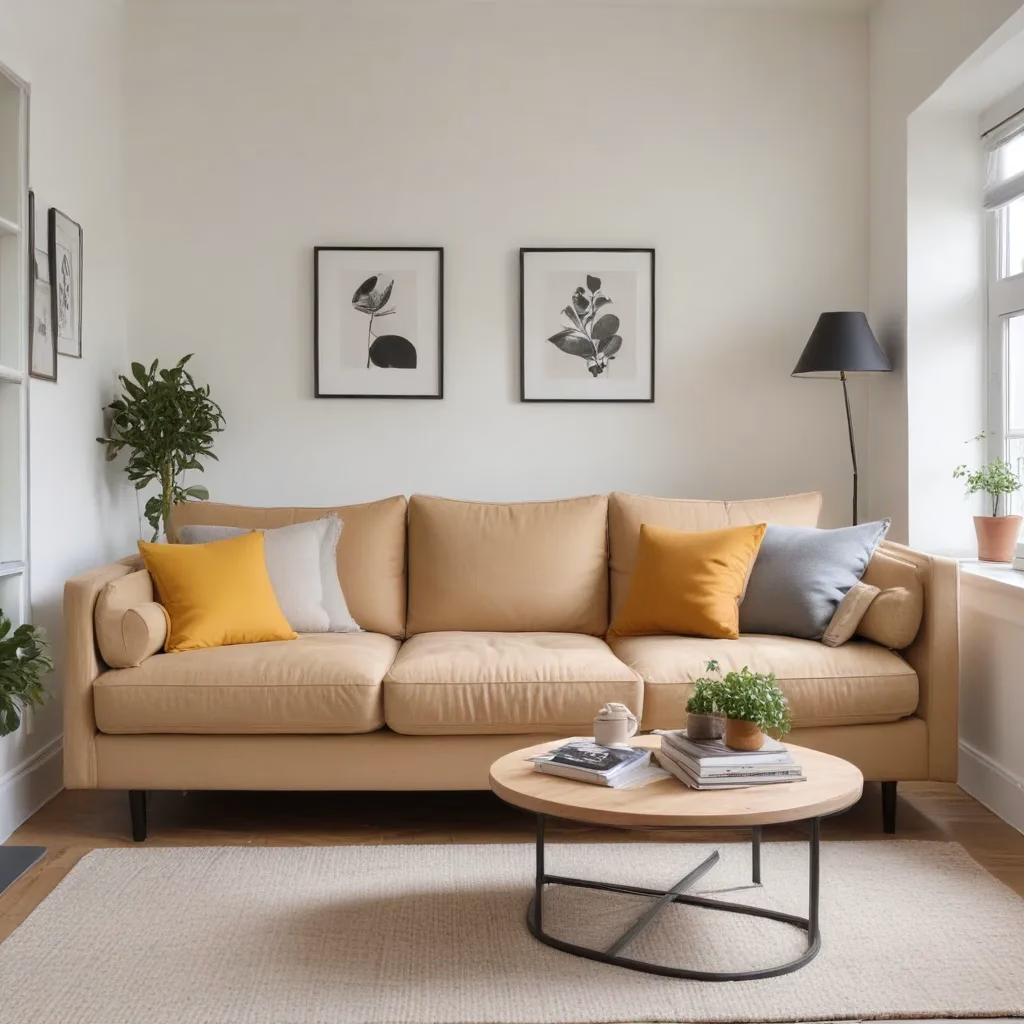The Inspiration Behind My Custom Sofa Project
I’ll never forget the day I bought my first home – well, condo, but close enough. As an avid minimalist, I had hardly any furniture to my name, just a rolling computer chair and a beat-up old desk. Needless to say, I had a lot of work ahead of me to turn this blank canvas into a cozy, lived-in home.
When it came to finding the perfect sofa, I scoured both online and brick-and-mortar stores, but the designs I loved always seemed to come with an equally hefty price tag. Prices ranged anywhere from £600 to £2,000, and the styles I truly adored were typically on the higher end of that spectrum.
That’s when an idea popped into my head: why not make my own sofa? As I dove into researching the process, I was surprised to find a lack of comprehensive resources documenting the ins and outs of DIY sofa-making. Most tutorials seemed to skim over the important details – the “why” behind the design choices, the specialized tools required, the common pitfalls to avoid. I knew if I was going to take this project on, I’d have to do a deep dive of my own.
The Anatomy Of A Custom Sofa
After countless hours of research, I learned that there are two main schools of thought when it comes to sofa construction: the traditional approach and the modern approach.
Traditional sofas are those vintage, ornate pieces you might find in a Victorian-era manor – the ones with intricate, carved wood frames and floral upholstery. In these designs, the cushions are built directly into the frame, and the support system consists of springs that are tied down to the bottom. If any part of the sofa breaks, it often requires a complete overhaul to fix.
On the other hand, modern sofas take a more modular approach. The cushions are separate from the frame, allowing for easy replacement, and the support system is either a series of springs or a webbing material stretched across the base. These contemporary designs tend to have cleaner lines and a more minimalist aesthetic.
For my project, I decided to go the modern route. Not only did it align better with my personal style preferences, but it also seemed a bit more straightforward from a construction standpoint. After all, I’m no professional upholsterer!
As one DIY enthusiast eloquently put it, “There’s a reason why many good sofas cost £1,000 and more. It requires having two skills: sewing and woodworking. If you can’t sew, you can buy custom cushions from shops at an additional cost. If you can’t use wood cutting tools or can’t make wood joints, then this might not be the project for you.”
Fortunately, I had a bit of experience in both areas, so I was up for the challenge. I dove headfirst into finalizing my design and gathering the necessary tools and materials. Little did I know just how much work was ahead of me.
Designing My Dream Sofa
Before I could start building, I needed to nail down the specifics of my dream sofa design. I spent hours scrolling through various inspiration photos, taking notes on elements I loved (and elements I wanted to avoid). Clean lines, a modular construction, and integrated USB ports for charging my devices were all must-haves.
Once I had a clear vision in mind, it was time to start sketching out the dimensions. This was a crucial step, as I needed to account for the width of the wood and any joints I planned to use. As the DIY sofa expert cautioned, “It’s too easy to make measurements based on numbers without actually measuring it. For example, regular 2x4s imply 2 inches by 4 inches, but the actual measurement is 1.5 inches and 3.5 inches. If you attempted to make something assuming 2×4, the actual size won’t match, so double-check those numbers.”
After several rounds of sketching and re-sketching, I finally settled on a design that I felt confident would work. The overall dimensions would be 85 inches long, 35 inches deep, and 35 inches high – a fairly standard size for a three-seater sofa. The seat height would be 18 inches, with a depth of 20-21 inches and a 15-inch back height. To keep things simple, I opted for a 90-degree angle at the front and a 15-degree incline for the backrest.
Sourcing Supplies And Tools
With my design finalized, it was time to start gathering the necessary supplies and tools. I quickly realized that this was going to be a significant investment, both in terms of time and money. After all, as the DIY expert pointed out, “The materials are the majority of the cost, and within the materials, the sofa cushions are the most expensive by far.”
Here’s a breakdown of what I ended up purchasing:
| Item | Cost |
|---|---|
| Wood (pine boards, plywood, etc.) | £300 |
| Sofa cushions | £500 |
| Upholstery fabric (microfiber) | £150 |
| Webbing, springs, and other hardware | £100 |
| Power tools (miter saw, drill, etc.) | £250 |
| Miscellaneous supplies (staple gun, ruler, etc.) | £50 |
| Total | £1,350 |
Ouch. That was a significant chunk of change, but I tried to console myself with the fact that I’d be creating a truly one-of-a-kind piece of furniture that would last for years to come. And hey, at least I wouldn’t have to worry about the delivery fees that come with buying a pre-made sofa!
Bringing My Sofa To Life
With all the materials and tools in hand, it was finally time to start building. I’ll admit, I felt a bit intimidated at first – after all, this was my first time tackling a project of this scale. But I dove in headfirst, determined to see it through.
The first step was cutting the boards to size, based on the measurements I had so carefully planned out. As the DIY expert advised, “I followed an old adage of ‘measure twice, cut once.’ I measured the distance, marked it, drew the line across, and measured it again to make sure it was correct. After cutting, I measured the final piece to verify I cut it to length.”
For the base of the sofa, I opted for traditional mortise and tenon joints – a time-consuming but incredibly sturdy construction method. The rest of the frame came together using pocket screws, which provided a clean, hidden look.
Once the frame was complete, it was time to tackle the webbing support system. This involved stapling one end of the webbing and then using a special tool to stretch it taut across the frame. As the DIY expert noted, “You can’t stretch it by hand due to the strength of the webbing. It makes a nice drumming sound when it’s correctly stretched.”
With the webbing in place, the next step was creating the cushions. I ordered high-density foam inserts and sewed custom covers out of the microfiber fabric I had purchased. This was a tedious process, but the end result was so worth it. The cushions fit the frames perfectly, providing the ideal blend of comfort and support.
The final touch was staining and sealing the wooden frame to give it that beautiful, rich look. I have to admit, I skipped the photo documentation on this part – I was too focused on getting it just right to worry about capturing the process.
The Unveiling Of My Custom Sofa
After countless hours of work, the moment of truth had finally arrived: the unveiling of my custom-built sofa. As I stepped back and admired my creation, I couldn’t help but feel a sense of pride and accomplishment. This wasn’t just any old sofa – this was a one-of-a-kind piece that I had poured my heart and soul into.
The clean, modern lines blended seamlessly with the warm, rich tones of the wood, and the plush, supportive cushions practically begged me to sink into them. And of course, I couldn’t resist the temptation to plug in my phone and test out those integrated USB ports. It was everything I had envisioned and more.
As I plop down onto my custom-built sofa, I can’t help but marvel at the journey that led me here. What started as a simple desire to find the perfect piece of furniture has turned into a truly rewarding DIY adventure. Sure, it was a lot of work (and a significant investment), but the end result is a sofa that is not only tailored to my exact specifications, but also imbued with a sense of personal pride and accomplishment.
And you know what they say – when you put in the time and effort to create something truly special, the end result is always worth it. That’s the magic of custom design, and it’s exactly what you’ll find at Sofas Spectacular – a team of talented craftspeople who are dedicated to bringing your vision to life, one custom sofa at a time.
So if you, like me, have been searching high and low for the perfect sofa and coming up short, I’d encourage you to consider the custom route. It may require a bit more work upfront, but trust me, the payoff is more than worth it. After all, what could be more satisfying than sinking into a sofa that was made just for you?




